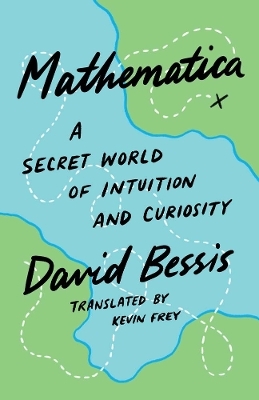
The History of the Calculus of Variations in the Eighteenth Century
American Mathematical Society (Verlag)
978-0-8218-3647-7 (ISBN)
Shortly after the invention of differential and integral calculus, the calculus of variations was developed. The new calculus looks for functions that minimize or maximize some quantity, such as the brachistochrone problem, which was solved by Johann Bernoulli, Leibniz, Newton, Jacob Bernoulli and l'Hopital and is sometimes considered as the starting point of the calculus of variations. In Woodhouse's book, first published in 1810, he has interwoven the historical progress with the scientific development of the subject. The reader will have the opportunity to see how calculus, during its first one hundred years, developed by seemingly tiny increments to become the highly polished subject that we know today. Here, Woodhouse's interweaving of history and science gives his special point of view on the mathematics. As he states in his preface: ""Indeed the authors who write near the beginnings of science are, in general, the most instructive; they take the reader more along with them, show him the real difficulties and, which is the main point, teach him the subject, the way they themselves learned it.
On Isoperimetrical Problems, and the Calculus of Variations: Chap. I: The problem of the curve of quickest descent proposed; James Bernoulli's solution of it; Principle of that solution Chap. II: Isoperimetrical problems proposed by James Bernoulli; Solved by John Bernoulli; His fundamental and specific equations; Application of them to the curve of quickest descent, and of a given length; Solution of isoperimetrical problems, by Brook Taylor; Imperfections of his and the Bernoullis's methods Chap. III: Euler's first memoir on isoperimetrical problems; Table of formulae; Solution of problems by it; Methods of Thomas Simpson, Emerson, and Mac Laurin Chap IV: Euler's second memoir; General formulae of solution; Characters of distinction, which problems admit of; Exceptions to the general formulae Chap. V: Euler's tract, entitled "Methodus inveniendi Lineas Curvas Proprietate Maximi Minimive gaudentes"; Distribution of cases into absolute and relative maxima and minima; Rules for finding the increment of quantities dependent on their varied state; Formulae of solution Chap. VI: Lagrange's memoir; Use of an appropriate symbol to denote the Variation of a quantity; Rules for finding the variation; New process of deducing Euler's formulae; Invention of new formulae Chap. VII: Lagrange's general method of treating isoperimetrical problems; Equation of limits; Cases of relative maxima and minima reduced to those of absolute Chap. VIII: Particular formulae deduced from the general one, for the purpose of facilitating the solution of problems; Problems solved.
| Erscheint lt. Verlag | 1.6.2007 |
|---|---|
| Reihe/Serie | AMS Chelsea Publishing |
| Verlagsort | Providence |
| Sprache | englisch |
| Gewicht | 360 g |
| Themenwelt | Mathematik / Informatik ► Mathematik ► Geschichte der Mathematik |
| Naturwissenschaften | |
| ISBN-10 | 0-8218-3647-1 / 0821836471 |
| ISBN-13 | 978-0-8218-3647-7 / 9780821836477 |
| Zustand | Neuware |
| Haben Sie eine Frage zum Produkt? |
aus dem Bereich


